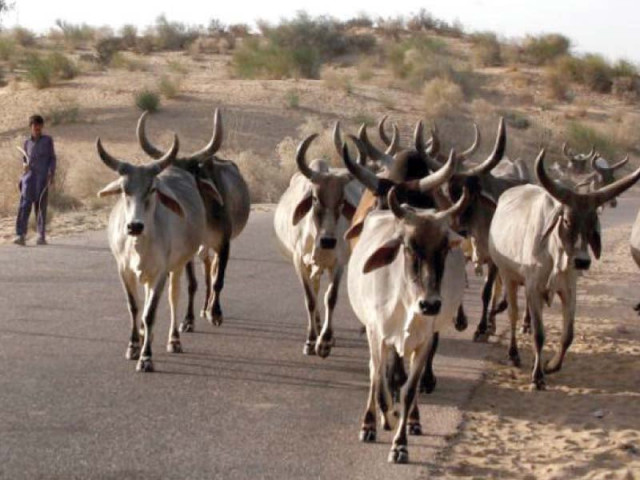Farmers toil in cities as weather refuses to smile
Wheat farmers worst affected, start moving to towns for jobs

About a quarter of Pakistan’s farmland is entirely dependent on rainfall to provide enough water, and in those areas farmers growing wheat, maize, mustard, pulses and vegetables may not be able to save much of their crop. PHOTO: FILE
“Had I stayed behind in my village, my family would have been starving,” the 45-year-old said. “I thought better to move to the city and try my luck.”
India stocks surge after farmer-friendly budget
An unusually warm and nearly dry Pakistan winter, with rainfall just a third of normal, has ruined crops and made life increasingly hard for the country’s small-scale farmers, experts say.
Many farmers say they are struggling to adapt to increasingly unreliable weather, and in many cases have had to migrate to cities and towns to find jobs to help them survive.
“I feel really unable to keep pace with weather patterns that are shifting so rapidly,” said Khan, who comes from Gujar Khan, a village about 55 kilometres (35 miles) from the capital.
Late season heavy rain in mid-February and scattered snow in the mountains of northern Pakistan have raised some hopes of recovery, but have also led to new problems, including a late surge of weeds, farmers say.
Now “we have to buy herbicides to fight weeds,” bemoaned Karam Nawaz, a maize farmer in Sialkot district, in the lower north-eastern parts of the country.
Dry winter leaves farmers looking for work in town
Rab Nawaz Gujar, who grows mustard, pulses and barley on 78 hectares (192 acres) in the suburbs of Chakwal, in Pakistan’s northeast, predicted harvests of winter crops would be down in his area by half.
Rain a third of normal
Winter rains this year were two months late and rainfall has been nearly 65% below normal since January 1, said Pakistan Meteorological Department Director General Ghulam Rasul. “That can cut winter harvests of some crops by 30%,” he predicted.
About a quarter of Pakistan’s farmland is entirely dependent on rainfall to provide enough water, and in those areas farmers growing wheat, maize, mustard, pulses and vegetables may not be able to save much of their crop, said a former Pakistan agriculture secretary Sirat Asghar.
Pakistan’s key wheat crop, sown between October and December and harvested in March and April, is likely to see a decline from an expected 26 million tons to 23 million tons, agriculture officials said.
“The worst impacts of dry and warm winter have come for wheat farmers,” said Pakistan Agri Forum (a farmers’ non-governmental organisation) Chairman Ibrahim Mughal.
“The expected decline in harvests could trigger a spike in wheat prices and some poor rural households would find it difficult to harvest or buy enough to meet their needs,” said an agriculture scientist Khuda Buksh at the University of Agriculture Faisalabad.
“Sensing the precarious scenario of household food insecurity, many male family members have already headed towards nearby urban areas in search of jobs to tackle the emerging situation,” he added.
Published in The Express Tribune, March 19th, 2016.
Like Business on Facebook, follow @TribuneBiz on Twitter to stay informed and join in the conversation.


















COMMENTS
Comments are moderated and generally will be posted if they are on-topic and not abusive.
For more information, please see our Comments FAQ